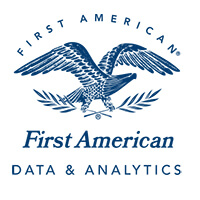It’s no secret that the mortgage industry runs on data. It is the essential component in underwriting decisions, valuing properties, detecting risk, mitigating fraud, and improving the efficiency and costs of all aspects of mortgage lending.
Like other kinds of fuel, data is often considered to be a commodity – and that couldn’t be further from the truth. Not all property data is of equal quality, just as not all real estate data providers are the same, nor do they provide the same level of service.
Just ask any lender who has missed a significant sales opportunity, or worse, been hit with a GSE buyback demand due to data integrity issues. Chances are they’ll answer: Quality is critical.
Ask a fintech provider that is ingesting massive amounts of data to reinvent various aspects of mortgage lending and you might get a similar response: Quality is critical.
That’s because a growing number of lenders are coming to understand that data quality is essential to reducing risk and helping to achieve a measurable competitive advantage.
Consider just a few specific examples of how and why data quality matters:
This past year, many lenders reported an uptick in loan-repurchase requests from the GSEs and complained that the mismatch between the ultra-low rates of two years ago and current rates is significantly increasing loan losses. In some cases, it’s resulting in losses as high as a third of the entire loan value. Undisclosed debt is one of the leading causes of GSE repurchase demands. If a data supplier or fraud solution is missing open trade liens or private party loans, it can create an expensive problem for a lender.
Similarly, the GSEs have increased their scrutiny of borrowers claiming second homes and/or investment properties as their primary residence. To help servicers combat this issue, First American Data & Analytics is now incorporating data from short-term rental platforms to identify this type of misrepresentation.
Likewise, unpaid homeowners’ association (HOA) dues can create risks for servicers and investors, especially in super lien states that can put the lender in a second-lien position behind the HOA. These risks can be identified and red-flagged with quality data.
Further improving risk mitigation, we’re leveraging our FraudGuard solution to capture more data from the Uniform Residential Loan Application (URLA), specifically additional employment and income data not available on previous forms. What does this mean? More data, and more quality data, improves fraud-related risk alerts.
Current and accurate data can also help uncover opportunities. Our clients are using our data to identify new markets, benchmark efforts against competitors, data-mine portfolios for the best home equity prospects, and target renters and homeowners with a greater propensity to buy or move-up to a larger home.
Consuming data “your way”
Consuming data in a manner that best meets your business needs is also an advantage. Lenders can do this through First American Data & Analytics solutions, such as FraudGuard and MarketView, as well as through our Procision suite of advanced AVMs.
First American Data & Analytics also offers custom solutions – unique data combinations, multiple data formats and flexible delivery channels – to provide real-time mortgage and real estate analytics and insights that drive informed decisions.
Lenders can directly access our vast databases how and when they want it through:
- direct integration via APIs;
- customizable bulk data licensing;
- self-service download through our web-based research platform DataTree or Online Store;
- cloud delivery
Assuring quality, usability and currency
Optical character recognition (OCR) and machine learning (ML) are supercharging the efficiencies, capabilities and accuracy of data and, as a result, the benefits it can deliver. These technologies enhance the standardization of data and documents so that more accurate information is quicker and easier to access.
OCR and ML can convert images into text that can be read by automated tools and easily searched, even for the smallest data detail. In fact, it’s because of proprietary OCR and advanced data extraction technologies that First American Data & Analytics has captured – and made searchable – the text from more than 8 billion document images of property and ownership records.
In addition, ML is used to automate the identification of various document types, increasing the number that can be recognized to an average of more than 1,000 document types in more than 2,000 counties. As a result, we collect and process between 200,000 and 300,000 new documents daily, some of which have hundreds of pages.
As mentioned earlier, the technology can scan and process any document type, including deeds, mortgages, covenants, conditions and restrictions, including historical, hand-written documents. When combined with documents already included in the First American Data & Analytics property, ownership and public record datasets, lenders have access to the most complete and current data.
Our ability to read and review massive amounts of documents is also solving other real estate-related problems. For example, one large California county is using our CovenantGuard solution to identify discriminatory restrictive covenants and phrases in millions of recorded documents, including hand-written documents dating back to the late 1800s.
As more lenders see the possibilities that quality data can provide, many are recognizing how critical quality data is to today’s lending process and taking a closer look at their data providers and the depth, accuracy and currency of the data that they can deliver.
Paul W. Harris is general manager, mortgage analytics, at First American Data & Analytics.













